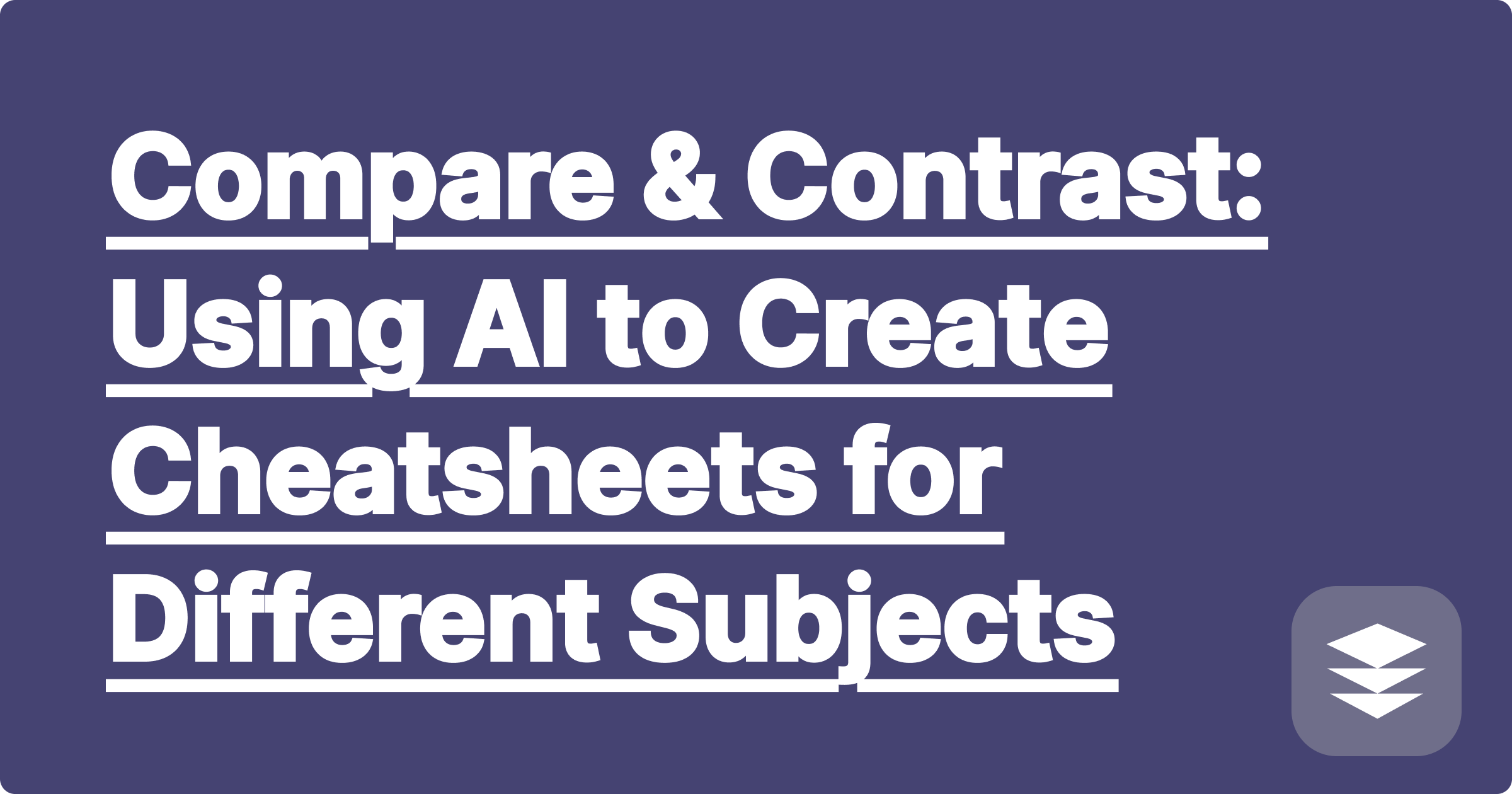
You wouldn't study for a history exam the same way you study for a chemistry final. History requires memorizing timelines and narratives. Chemistry requires mastering reaction mechanisms and formulas. Your study materials should reflect these differences.
This is where generic, one-size-fits-all study guides fail. A perfect chemistry cheat sheet is useless if it's formatted like a literature summary. To study effectively, you need a tool that understands the unique language of each subject.
A powerful AI like GPAI Cheatsheet isn't just a summarizer; it's a versatile biology study guide maker, a chemistry reaction organizer, and a coding syntax reference, all rolled into one. This guide will show you how to leverage AI to create optimized cheatsheets perfectly tailored to the specific demands of different STEM subjects.
Let's break down what a high-quality cheatsheet looks like for three different core subjects. This comparison highlights why a customizable, AI-powered approach is superior.
SubjectKey Elements to IncludeWhy a Generic Summary FailsHow GPAI Cheatsheet ExcelsChemistryReaction mechanisms, formulas, periodic table trends, functional groups, key definitions (e.g., enthalpy).It can't properly format reaction arrows or chemical structures.Intelligently extracts and formats reaction pathways and molecular diagrams.BiologyBiological pathways (e.g., Krebs cycle), anatomical diagrams, vocabulary-heavy definitions, process flows.It struggles to capture the relationship between steps in a complex pathway.Extracts diagrams with their labels intact and organizes processes into logical, sequential blocks.Computer ScienceCode syntax, data structures (e.g., linked lists), algorithms (e.g., sorting), Big O notation, key definitions.It might "break" code formatting or misinterpret syntax as plain text.Preserves code formatting within dedicated blocks and extracts algorithms as step-by-step processes.
Chemistry is all about reactions and structures. Your cheatsheet needs to be visual and precise.
How to do it with GPAI Cheatsheet:
[Image: A screenshot of the GPAI Cheatsheet builder interface showing a perfectly formatted organic chemistry reaction on the left, with a block of text explaining the reaction on the right. Alt-text: A user creating a chemistry cheat sheet with an AI tool.]
Biology is the science of systems and vocabulary. Your study guide must emphasize pathways and definitions.
How to do it with GPAI Cheatsheet:
Computer science is about logic and syntax. Your reference sheet needs to be clean, accurate, and easy to scan.
How to do it with GPAI Cheatsheet:
"I used GPAI Cheatsheet for both my O-Chem and Data Structures finals. The AI understood that the O-Chem sheet needed reaction diagrams, while the Data Structures sheet needed clean code blocks. It's the only tool I've found that gets the details right for different subjects."
Q1: Does the AI really understand the difference between a chemical reaction and a line of code?
A: Yes. Advanced AI models are trained on diverse datasets, allowing them to recognize the distinct syntax and structure of different academic disciplines. GPAI Cheatsheet's engine is specifically fine-tuned to differentiate between scientific diagrams, mathematical equations, and programming languages.
Q2: Can I combine notes from different subjects into one document?
A: While you can, it's more effective to create a dedicated, optimized cheatsheet for each subject. This allows the AI to focus on the unique patterns and key information types relevant to that specific field, resulting in a higher-quality study guide.
Q3: Is this better than finding a pre-made cheatsheet on a site like Chegg or Course Hero?
A: Absolutely. Those sheets are generic. A chemistry cheat sheet or biology study guide maker that uses your professor's own materials ensures that the final document is 100% relevant to what will be on your exam, including their specific examples and notation.
Stop using a hammer for a screw. Your study methods should be as specialized as the subjects you're learning. By using an AI that understands the unique needs of each discipline, you can create a powerful, tailored study aid that gives you a distinct advantage.
Ready to create the perfect study guide for any class?
[Try GPAI Cheatsheet today. Upload your notes from any STEM subject and see how it intelligently creates a tailored cheatsheet. Sign up now for 100 free credits.]
Image to Text Math: Digitize Notes with an AI Equation OCR | GPAI Solver
Using an AI Practice Problem Generator for Your Next Exam | GPAI Solver
The Ethics of AI in Education: How to Use GPAI Solver Responsibly
The Ultimate Open-Book Exam Strategy: Build a 'Second Brain' with AI
My Professor's 100-Slide PowerPoint, Now a 2-Page Cheatsheet
How to Create a Personalized Formula Sheet for Your Physics Final
I Didn't Take Any Notes: How to Create a Study Guide from a Textbook
The Art of the 'Knowledge Block': Why Building Your Cheatsheet is Better
How AI Can Identify Key Concepts from Your Lecture Recordings
Compare & Contrast: Using AI to Create Cheatsheets for Different Subjects